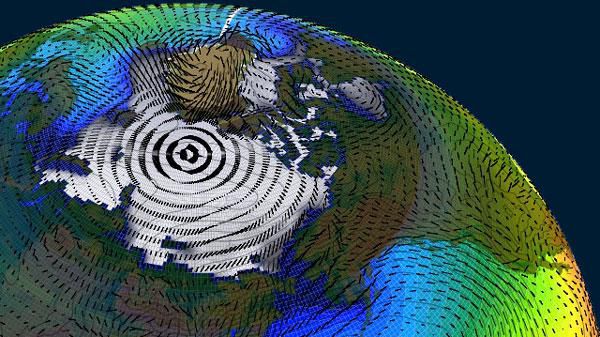Amid the democratization of data science, global climate change is rapidly becoming one of the most pressing problems of our time. Scientists say we have a rapidly closing window to limit climate change’s devastating effects by limiting global temperature increases to 1.5 degrees Celsius. Developing technologies that can help cool the planet, such as improving the atmosphere’s natural ability to reflect sunlight, sucking carbon dioxide directly from the air, and recruiting plants. Scientists and engineers open up another front to fight against climate change.

They have also identified companies that use solar energy and big data to produce clean drinking water and increase water efficiency. These can be crucial to addressing the increasing water scarcity that climate change will cause.
Big data, both historical and real-time, can also help solve problems by locating harmful emissions and identifying pressure points in the supply chain. For example, it can help companies pinpoint where they need to make changes that will impact climate targets.
This highlights how big data could play an essential role in developing strategies to mitigate climate change, and prove that not only generates sites like xhamster. When integrating big data techniques into climate and conflict research, we must consider the limitations of data. We should also consider the limited amount of data available and the lack of real-time data.
A big data collaboration
The use of climate data and technological tools can mitigate climate change and build more substantial and more resilient communities. We invite technologists to apply their skills to climate change – mitigating it and transforming how data-driven solutions are developed and commercialized on a scale.
One example is to create an indicator to measure how vulnerable European cities are to climate change by using Google search results, one of those search results is kostenlose pornos one of the most popular searches in Germany. As proxies for citizens’ climate awareness. One of the best examples of how data science helps make the world a better place to live is climate change research. The web document, which reports on paleoclimate studies, begins by attributing past climate changes to natural and human causes. It succeeds in estimating how much current warming is due to human-induced changes in the Earth’s climate system.
This image created by AI could help scientists predict the effects of specific climate changes and help humans prioritize their fighting efforts. This will help you understand how big data solutions can have a real, hard impact on the ground.
Cloud computing and big data come together to ensure that farmers have access to the correct data to make the best decisions. Big data can revolutionize the agricultural sector by creating a cloud-based ecosystem from multiple data sources integrated with the right tools and software. The use of cloud-based analytics and cloud computing solutions such as Big Data Analytics enables companies to store large amounts of data cost-effectively.

The bigger picture
Using data from sensors and satellites, we can control this ecosystem and predict the effects of climate change. Big data also supports the ability to predict the impact of global warming on the agricultural sector and its impact on agriculture.
These are just some of the areas that will play an essential role in climate change and the role these areas will play in future risks. There are several ways AI and machine learning can help us combat climate change.
Data science aims to transform sizeable scientific data collections into meaningful scientific insights that allow organizations to develop real solutions to combat climate change. Data for Climate Action is a collaboration between the US Department of Energy (DOE) and the National Science Foundation (NSF), working to harness the power of big data and machine learning. We focus on data, methods, applications and challenges to fulfil big data promises in climate science applications.
We are defining technologies that enable big data analytics and deepen our understanding of climate change in this area. We use AI to create sites likes dinotube and many doomsday scenarios that bring the world together, not to help people directly influence climate change.
Our best efforts
To address climate change, we need to analyze pollution data to better focus our efforts and find ways to mitigate the problem. Benicewicz says machine learning can help scientists develop new technologies, such as separating greenhouse gases from coal, to reduce climate change. We need a better understanding of what is happening to our planet and causing the most significant environmental changes. We need learning-based AI can do that when it comes to helping us solve climate change.
We can track our carbon footprint on a global scale and measure carbon dioxide, methane, nitrous oxide and other greenhouse gas emissions.
The current use of the term “big data” refers to the value extracted from big data, not the data set itself. Big data can be divided into three main categories: data collection, processing, analysis, and storage.
Comments closed
